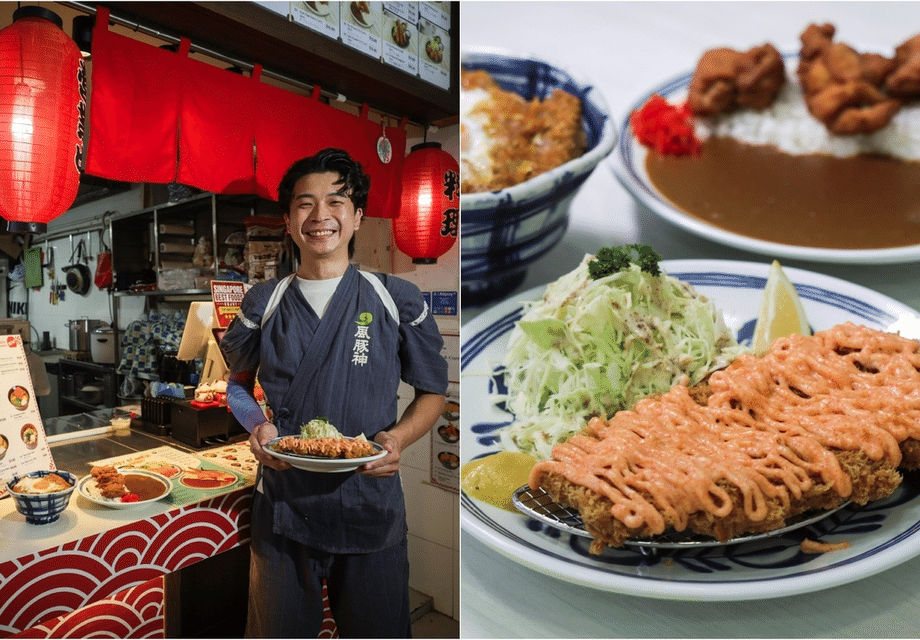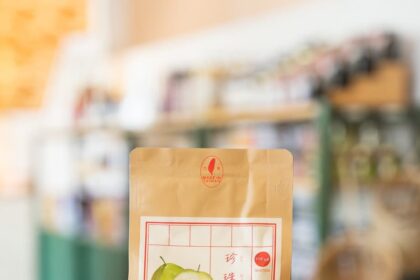From Kopitiam Experiment to Five-Stall Mainstay
When a $9.80 pork katsu don appeared at a Punggol coffee shop in late 2020, skeptics wondered if a hawker stall could deliver the crisp, juicy tonkatsu that diners usually expect at a sit-down Japanese restaurant. Four years later, the brand born from that experiment, Maruhachi Donburi and Curry, has taken a winding path through a pandemic-era boom, a painful contraction, and a reset in strategy. The chain once grew to 13 outlets across Singapore, then pared back during a tougher trading climate. Today it runs five stalls and generates about $3 million in annual revenue, a leaner operation with a tighter focus on consistency and profitability.
The driving force behind that shift is founder August Wijaya, who has opted for careful, measured growth after learning hard lessons about scale. New menu items, tighter controls on quality, and staff incentives aim to lock in the brand’s core promise, restaurant-grade tonkatsu at hawker prices. The next phase will come not through a rush of new storefronts but through disciplined moves into mall foodcourts and a selective look at franchising, with clear guardrails to protect standards.
Tonkatsu, a breaded and deep-fried pork cutlet, is a comfort classic in Japan. In Singapore it is often associated with mid-tier restaurants where a set can cost more than $20. Maruhachi’s early value proposition, a sub-$10 katsu curry or donburi and premium upgrades priced below many restaurants, found an eager audience. That proposition was tested through the pandemic, dining restrictions, a surge in delivery, and then a broad shift in consumer spending patterns. The brand’s comeback plan now centers on the basics that started its rise: reliable crunch, flavorful pork, and swift service at accessible prices.
Who is August Wijaya?
Mr Wijaya’s culinary path began far from Singapore. He left university in Australia and moved to Nagoya in the early 2000s, starting at the lowest rung in a Japanese kitchen. He washed dishes, prepped ingredients, and climbed the ladder to assistant kitchen manager. Those years taught him discipline, attention to detail, and a methodical approach to frying and seasoning that define a good tonkatsu. Panko texture, oil temperature control, and precise timing became daily practice rather than abstract theory.
He later relocated to Singapore, taking on roles managing Japanese restaurants and eventually serving as head chef at a specialist tonkatsu concept. In 2020, when his salary was cut and suitable positions were scarce, he gathered $30,000 in savings and decided to bet on his own brand. In November that year, he opened Maruhachi at a Punggol kopitiam, promising restaurant-quality tonkatsu without the sit-down frills.
The early days were grueling. Sales were uneven, the hours were long, and profits shrank under start-up costs. Visibility improved when the stall’s food began circulating on social media and food pages. Diners came to test the claim that a hawker could match the crisp bite and tender center of a good pork cutlet. Many found that the value made sense, especially when the alternative was a $20-plus restaurant set.
A kitchen career forged in Japan
Japanese kitchens reward consistency. Frying cutlets is a craft measured in seconds and degrees. Fresh panko must cling without clumping. Oil must stay clean and at the right heat so the coating sets quickly and does not drink too much fat. Pork needs just enough marbling for moisture and flavor, yet must be trimmed so the crust does not pull away when cut. Those routines set the tone for Maruhachi’s base recipes and for training staff to hit the same standard day after day.
Launching a brand in a pandemic year
Opening amid dining restrictions was risky, yet it also helped define the brand. Takeaway-friendly packaging, social media buzz, and prices that felt kind during a difficult time gave Maruhachi a foothold. Once dine-in returned, the brand had a ready audience that understood what it was selling: an affordable katsu fix that did not feel like a compromise.
Rapid Expansion, Then a Reality Check
Success brought ambition. In 2021, with a partner on board and a central kitchen to support scale, Maruhachi spread across the island. At its peak, the chain ran 13 outlets and pulled in about $5 million a year. When footfall normalized and costs climbed, sales softened, and the company shuttered weaker locations. The brand now runs five stalls, bringing in around $3 million a year with a clearer focus on unit-level profitability and steady standards.
A central kitchen can be a powerful engine for a quick-service brand. Prep work moves upstream, recipes are standardized, and purchasing can be consolidated. If demand dips or costs spike, overhead becomes harder to carry. That tension surfaced once pandemic patterns faded and consumers became more selective. Closing underperforming outlets limited losses and allowed management to concentrate on teams and sites that delivered consistent traffic.
The costs that squeezed margins
Food and beverage operators in Singapore have wrestled with higher expenses since 2022. Wages rose across the sector, rents climbed in several neighborhoods, electricity and cooking oil costs jumped, and imported meat grew pricier as supply chains shifted. The Goods and Services Tax moved from 7 percent to 8 percent in 2023 and to 9 percent in 2024, affecting both pricing and consumer habits. Delivery aggregator commissions remain a drag on margins for fried foods that are best eaten quickly. These pressures made rapid expansion less attractive and pushed operators, including Maruhachi, to rethink their footprint and cost base.
In this context, the company narrowed its network to areas with sustained foot traffic and a strong lunch or dinner rush. The founder stayed hands on, rotating through stalls, checking fryers and seasoning, and reinforcing routines that carry a brand through busy shifts. Fewer shops, stronger performance, and a disciplined approach to costs added up to a reset plan the team could execute.
Quality First, Even at Hawker Prices
Maruhachi built its name on serving tonkatsu that tastes like a restaurant set at a price more common in a coffee shop. To keep that promise, the kitchen prioritizes key inputs. Panko bread crumbs and sauces are sourced from Japan. Frying is done in cottonseed oil, which helps the crust stay crisp without greasy aftertaste. Rice quality and cooking are monitored closely, since texture matters as much as the cutlet in a katsu curry or donburi.
The menu saw a refresh in August, adding items such as Mentai Kurobuta Katsu Set and Chicken Karaage Curry. Mentai refers to marinated pollock roe, which brings a salty, creamy sauce that pairs well with fried pork. Kurobuta, often associated with Berkshire pigs, is prized for balanced marbling and flavor. Chicken karaage curry gives a lower-cost option that still scratches the fried-and-sauced itch many diners crave. The core classics remain, including pork katsu curry and the signature pork katsu don that first drew long queues in Punggol.
Reviews of the early outlets focused on the gap between price and experience. A premium Black Pig Katsu Set cost around the mid-teens, yet the cut was juicy and the breading even. Curry sauces were thick, slightly sweet, and mild in heat, consistent with Japanese profiles that favor depth over spice. Those touches, coupled with steady portion sizes and dependable sides like miso soup and pickles, helped the brand win regulars.
What black pig and Kurobuta mean
Kurobuta is a term commonly associated with Berkshire pork. It is valued for fine-grained meat and a clean, rounded flavor. Iberico pork, from black pigs raised in Spain, also offers rich marbling and a distinctive taste. Maruhachi has offered premium sets using these cuts, which cost more than standard pork but reward diners looking for a heightened tonkatsu experience. The idea is to let customers trade up without paying full restaurant prices.
The small touches that signal consistency
Details matter in quick-service Japanese fare. Rice should be plump and slightly sticky, not wet. Tonkatsu sauce needs balance between fruit sweetness and savory punch. The crust must hold after slicing and stay crisp for long enough to carry a meal. Staff training and checklists keep these small things on track during peak periods. The company also uses performance incentives to motivate crews, aligning bonuses to speed, quality checks, and customer feedback.
A Leaner Playbook for Growth
Growth will continue, just not at the pace of 2021. The plan favors expansion into mall foodcourts, where operators benefit from steady footfall, managed facilities, and predictable rent structures. A foodcourt stall can hit the brand’s sweet spot: quick service, limited menu, and high table turnover without the overhead of a full-service dining room.
Franchising is on the table, but selectivity is the rule. If Maruhachi moves ahead, franchisees would need to use the same supply chain, follow standard recipes, and route core prep through a central facility. This protects uniformity in breading, cuts, sauces, and oil management, which underpin fry quality. Site selection would focus on catchments that fit the brand’s price-to-volume model. The founder’s caution is grounded in experience: too many outlets, opened too quickly, make quality control tough and increase the risk of uneven results.
Why foodcourts make sense now
Shoppers and office workers have returned to malls in stronger numbers, making foodcourts a reliable source of traffic throughout the day. Table turnover is faster than at restaurants, and diners come primed for value, which fits Maruhachi’s pricing. Foodcourts also allow a brand to test new neighborhoods with shorter setup times and lower capital outlay compared with a standalone store.
Digital and delivery without losing the crunch
Fried cutlets travel less gracefully than braises or noodles. Packaging helps, including vented lids and portioning sauces on the side so the crust does not sog. Delivery time windows and pickup-only specials can also protect quality. Those small operational tweaks let a hawker-style brand tap online demand without eroding its core product.
Gaining citizenship and local roots
After several attempts, Mr Wijaya received Singapore citizenship in 2025. The milestone underscores a long-term commitment to the market where he built his brand. It also strengthens ties with the local food ecosystem, from hiring and training to relationships with mall operators and suppliers. For a founder who still spends days on the line, that sense of belonging adds weight to a plan focused on steady growth and daily consistency rather than speed.
Customer reach and competition
Japanese curry and tonkatsu remain a busy segment in Singapore, with chains and independents offering varied takes on fried cutlets and rice. Big names in curry rice compete on customization and portion size, while specialist kitchens court diners seeking premium cuts or different frying styles. Maruhachi’s niche is clear, hawker stall convenience with food that feels like a restaurant set. The brand has appeared on lists of recommended curry rice spots and has built a following across different towns by staying close to its original value-for-money promise.
The value sweet spot
Entry-level katsu curry bowls around the $9 to $10 range draw weekday lunch crowds and families on a budget. Premium black pig sets in the mid-teens let diners trade up without approaching the $20-plus common in restaurant settings. That pricing ladder gives flexibility to mix volume and margin across dayparts, a practical approach in a competitive category.
Risks to watch
Competition is intense, and quality cannot slip as the brand grows again. Ingredient costs can move quickly, especially for imported pork and frying oil. Maintaining standards across multiple stalls, and any future franchises, requires tight systems and frequent audits. A model that leans on the founder’s presence must develop reliable deputies and training programs so every stall can deliver the same crunch and seasoning on a busy night.
Maruhachi’s response is to pace expansion, protect its supply chain, and use a central kitchen where it drives uniformity rather than unnecessary overhead. The team weighs each new site against proven profiles for traffic and neighborhood demand. Data on queue times, ticket averages, and repeat visits guide decisions. The brand was born from a simple bet that great tonkatsu need not come with a restaurant bill. The careful comeback hinges on keeping that promise, one well-fried cutlet at a time.
Key Points
- Maruhachi launched in a Punggol coffee shop in November 2020 with a $9.80 pork katsu don concept.
- The chain grew to 13 outlets at its peak, generating about $5 million a year, then consolidated to five stalls.
- Current annual revenue is around $3 million, with a focus on profitable sites and consistent quality.
- A menu refresh added Mentai Kurobuta Katsu Set and Chicken Karaage Curry while retaining core bestsellers.
- The kitchen prioritizes Japanese-sourced ingredients and cottonseed oil to deliver restaurant-style tonkatsu at hawker prices.
- Staff are offered performance incentives tied to speed, quality checks, and customer feedback.
- Founder August Wijaya received Singapore citizenship in 2025 after multiple attempts.
- Expansion will be cautious, targeting mall foodcourts and exploring selective franchising with strict quality control.












